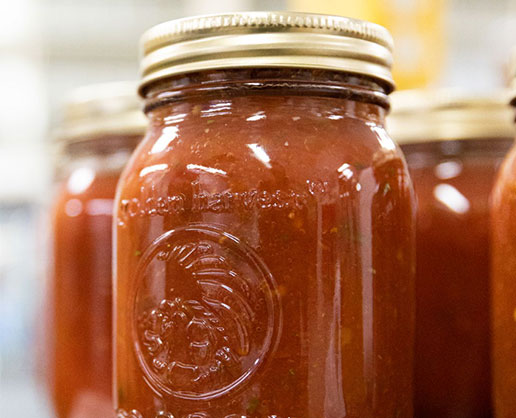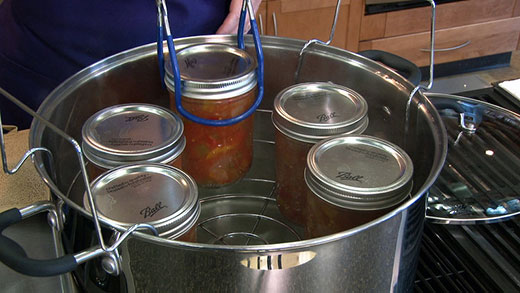Frozen foods are best used in sauces, jams and jellies, Blakeslee says
Freezing is often the quickest way to preserve fresh food from a garden or farmers market, but Kansas State University food scientist Karen Blakeslee said consumers should be cautious if thinking about canning that same food later on.
“Using frozen food in canning is not very cost-effective because of labor, time and energy to can the products,” said Blakeslee, who also is coordinator of K-State’s Rapid Response Center for food science. “Because of the time and labor spent freezing the food, it may be best for safety and quality to leave the food frozen, then thaw and use it later when cooking a meal.”
If canning the food is still preferred, Blakeslee suggests doing so in sauces, jams, jellies or fruit butters.
“The reason is that frozen food is much softer in texture when thawed,” she said. “Canning frozen foods in their original form – such as whole or cut pieces – can cause safety problems because the food will compact more and become more dense inside the jar. This can slow down how heat moves through the jar during canning, which affects food safety. The quality of these foods will be poor.”
Some examples of foods that could be frozen, then used later in a canned product, include:
- Peaches – make into jam, peach butter or jelly.
- Tomatoes – make into tomato juice, tomato sauce or spaghetti sauce.
- Apples – make into applesauce, apple butter or jelly.
- Berries – make into jam or jelly, or blend them to dehydrate fruit leather.
“Juice can be extracted from fruit to make jelly,” Blakeslee said. “There are stovetop juice extractors that steam the fruit to allow the juice to release from the fruit. Another option is to heat and crush the fruit, then pour into a jelly bag and suspend over a bowl to catch the juice.”
Additional guidance on preserving jams and jellies is available online.
Still, Blakeslee said, “for many foods, it is best to leave them frozen for best quality in the end.”
More information on food preservation is available online from K-State’s Rapid Response Center for food science.
Blakeslee publishes a monthly newsletter called You Asked It! that provides numerous tips on being safe and healthy. More information is also available from local extension offices in Kansas.




